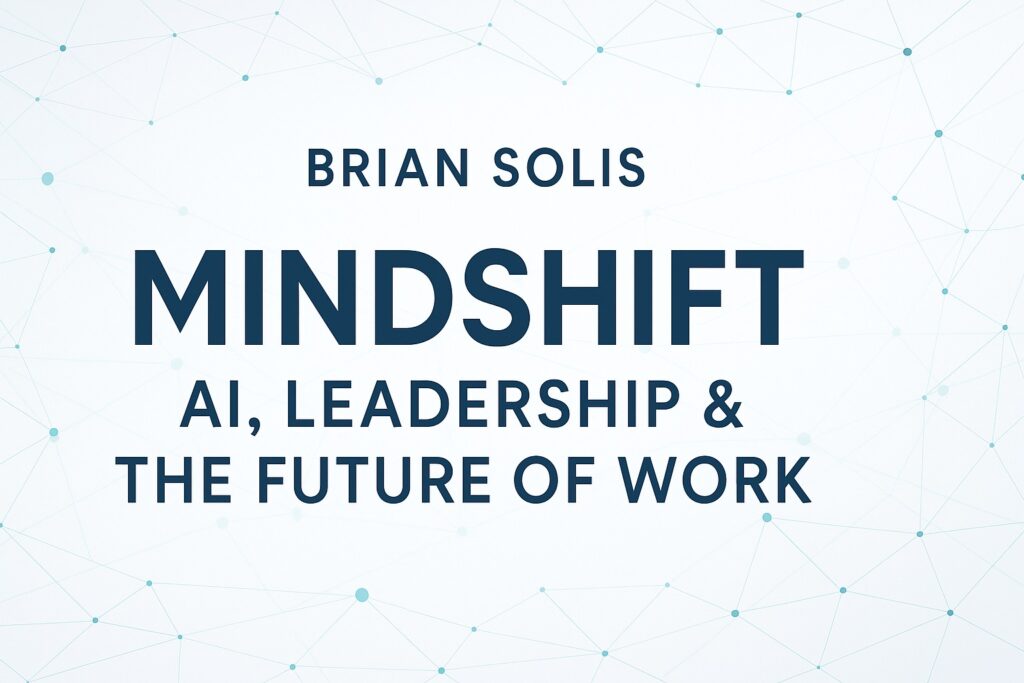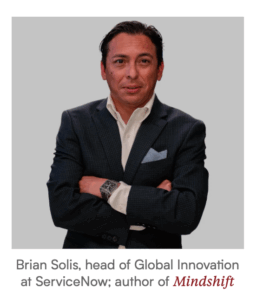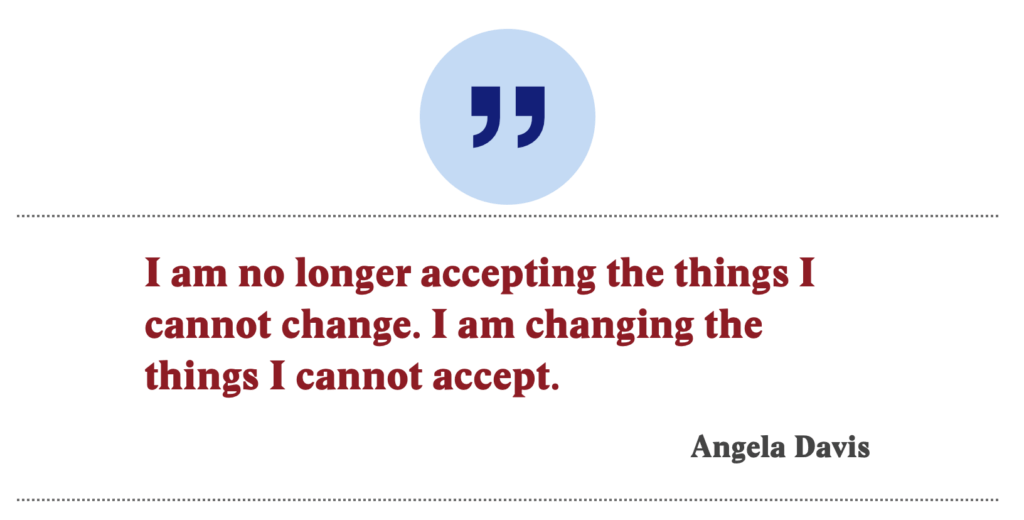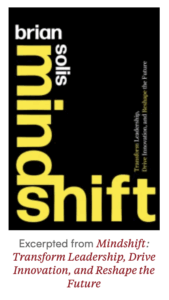
I meant to share this from InnoLead….I hope it adds value to your day.
In my work with change agents over the years, one thing has become clear: leadership is a decision you make about the future you are willing to fight for.
When I wrote “The Digital Change Agent’s Manifesto” back in 2019, I interviewed leaders driving transformation at brands like The Coca-Cola Company, Starbucks, Samsung Electronics, Visa, and others. They were not always in big roles. Many were “reluctant leaders” who did not love politics or bureaucracy, but they saw where technology, customer behavior, and employee expectations were heading, and they simply could not sit still anymore.
“Although it may seem counter-intuitive, to manage detractors, change agents ought to listen closely to their feedback. It is better to let them voice their concerns than to let them detract in secret. By listening to their concerns and the rationale for why they resist specific efforts to transform the organization digitally — and by trying to understand their motivations — change agents can turn detractors into allies. Most vocal critics can become your biggest advocates if you spend time with them.” – The Digital Change Agent’s Manifesto
In Mindshift, I tell the story of why people like this are critical to competitiveness. These individuals exist in your company, and they’re the real catalysts of progress. They translate trends into action. Find them. Empower them. Maybe it’s you…?
These leaders will only stay in a company as long as they feel they can affect change from where they sit. They step out of their comfort zones, learn to manage up and across, and over time they earn influence, build alliances, and often grow into formal leadership roles.
There is no single personality profile for a change agent. Introverts and extroverts, cautious planners and chaos-friendly starters, all showed up in the research. What they shared was conviction, curiosity, and a willingness to do the hard emotional work of navigating corporate systems to move the organization forward.
Simon Sinek is right: leadership is not a rank, it is a choice. Steve Jobs added an important dimension. The best leaders are not just thinkers or doers, they are both. They are self-managing, aligned around a clear vision, and fueled by passion that keeps them going when any rational person would give up.
If there is a takeaway for all of us, it is this:
– You do not need permission to become a change agent.
– You do need a clear vision of a better future and the courage to act on it.
– You will need to learn the politics of influence, not to play games, but to unlock progress.
The future belongs to those inside organizations who are willing to say, “I am no longer accepting the things I cannot change, I am changing the things I cannot accept,” and then back it up with action, empathy, and perseverance.
Are you waiting for a leader, or quietly becoming one?

Book Excerpt: What Makes Change Agents and Leaders Successful
Source: Innolead
This piece is excerpted from the new book Mindshift: Transform Leadership, Drive Innovation, and Shape the Future.

Before we continue, when I use the term change agent, I simply mean a believer in and catalyst of progress; this is someone who sees a better future and is on the cusp or in the process of becoming a leader. I am not referring to leaders of marketing or publicity initiatives masquerading as meaningful change.

The change agents I studied were often not officially sanctioned to lead change. They generally were not 100% confident that it was their place to speak up and champion what they were advocating. They were often reluctant to step up to leadership. Nor did they desire to campaign for a change-management role or believe in traditional change management. Many were not fans of corporate procedure, and certainly not of bureaucracy. They called to mind something Jony Ive once said: “I always thought that the idea of a company was a necessary evil to make an idea relevant.” He laughed, but he was serious.
These change agents ended up moving their organizations forward nonetheless, because they also shared the belief that they had an understanding of the potential impacts of disruptive technologies and they were willing to play a role in helping their teams and organizations capitalize on them. That fueled their transition from their comfort zones to conference rooms and eventually boardrooms.

They collectively described themselves as problem-solvers and critical thinkers. But they also differed in some traits. Some said they are extroverts and others introverts. Some said they find comfort in chaos and being self-starters. Others said they are cautious and need internal support and validation to further their efforts. In other words, there is no one type of person who can become a change agent.
My research found that change agents can rise from anywhere in the organization. No matter where they sit, they all care passionately about translating trends into actions. When I asked these leaders whether they were committed to staying at their current employers or might consider moving to the proverbial greener grass of a new company, they responded time and time again that they would stay as long as they believed they “could effect change here.”
Change agents step up to lead mindshifts because they care so much about their companies succeeding. They pay close attention to trends reshaping their markets, whether that’s evolving customer expectations or behaviors, changing employee expectations and desires, or emergent technologies. They seek to understand what’s happening and why, and they explore ways to proactively respond.
At some point, a mindshift takes place in their career and they realize that they can’t just sit idly waiting for someone else to rise and lead the way. It’s their willingness and willful thinking that helps them evolve to become leaders, in phases, not overnight. They are not always skilled at first in getting buy-in, and most are turned off by the politics of organizations. They also probably wouldn’t refer to themselves as change agents.

Despite their aversion to corporate politicking, because these leaders realize that their expertise can be productive and beneficial to the rest of the organization, they put the work in to learn to navigate corporate relationships better and become skilled in the art of “managing up” and “managing across,” with colleagues in different areas of the organization, to rally support and collaborate on the change process.
When I ask leaders who have successfully rallied their companies to capitalize on emergent trends how they’ve done it, they always share that they learned how to earn influence within their organization. They formed strategic alliances, focusing not just on managing their teams well, but on building relationships with key decision-makers, eventually including those at the executive level, even including those in the C-suite.
Over time as they influence positive change, they often rise into official leadership positions. Their ability to understand trends, their vision, and their ability to bring people together make them “heroes” in their organization, though they definitely wouldn’t describe themselves that way.
Leadership Is Not a Rank, It’s a Choice
This heading is a quote from Simon Sinek, author of a bestselling book on leadership, Leaders Eat Last. In his research on leadership, he found that so many people in business who are in leadership positions are not truly leaders. “I know many people at the senior most levels of organizations who are absolutely not leaders, they are authorities.” He points out, “We do what they say because they have authority over us, but we would not follow them. I know many people who are at the bottoms of organizations who have no authority, and they are absolutely leaders.”
What makes for a true leader? I can find no better authority on this than Steve Jobs.
When asked about what he looked for in the people he wanted to bring into the company to help him lead the Apple revolution, he said,
“The greatest people are self-managing—they don’t need to be managed. Once they know what to do, they’ll go figure out how to do it. What they need is a common vision. And that’s what leadership is: having a vision; being able to articulate that so the people around you can understand it; and getting a consensus on a common vision.”
Jobs sought people who believed in better outcomes, not the traditional managed outcomes. In a later interview, he recounted:
“We wanted people who were insanely great at what they did, but were not necessarily those seasoned professionals. We went through that stage at Apple, where we went out and we thought, ‘We’re going to be a big company, let’s hire professional management.’ It didn’t work at all. Most of them were bozos. They knew how to manage, but they didn’t know how to do anything!”
“You know who the best managers are?” Jobs asked. “They’re the great individual contributors who never ever want to be a manager but decide they have to be a manager, because no one else is going to be able to do as good a job as them.” He emphasized that they are doers in addition to visionaries. He didn’t believe a person is necessarily one or the other. When he was asked in one interview about the balance between thinking and doing in innovating, he responded, “My observation is that the doers are the major thinkers. The people that really create the things that change this industry are both the thinker and doer in one person.”
Steve Jobs also stressed passion, and he saw it not as anything romantic, as only a strong feeling; he saw it as a form of pragmatism. At a 2007 conference, Jobs was joined by Bill Gates for a conversation on innovation and future trends. Each was asked to share his single, most valuable piece of advice. Jobs responded:
“People say you have a lot of passion for what you’re doing, and it’s totally true. And the reason is because it’s so hard, that if you don’t, any rational person would give up. You have to do it over a sustained period of time. So, if you don’t love it, if you’re not having fun doing it… you’re going to give up. And that’s what happens to most people, actually. If you really look at the ones that ended up being successful in the eyes of society, and the ones who didn’t, oftentimes it’s the ones that are successful, love what they did so they could persevere when it got really tough. And the ones that didn’t love it, quit. So, you gotta love it, you gotta have passion.”
Jobs then called this advice the high-order bit, borrowing a programming term that describes the bit position in a binary number with the greatest value. In other words, passion trumps all. As he said, “People with passion can change the world for the better.”
In his must-see Stanford commencement speech in 2005, Jobs commended the graduates, “You’ve got to find what you love. The only way to do great work is to love what you do. If you haven’t found it yet, keep looking. Don’t settle. As with all matters of the heart, you’ll know when you find it.”
Please read and share! What’s your experience in driving change, especially in an era of AI?
—
Read Mindshift | Subscribe to a Quantum of Solis | Book Brian as a Speaker





Leave a Reply